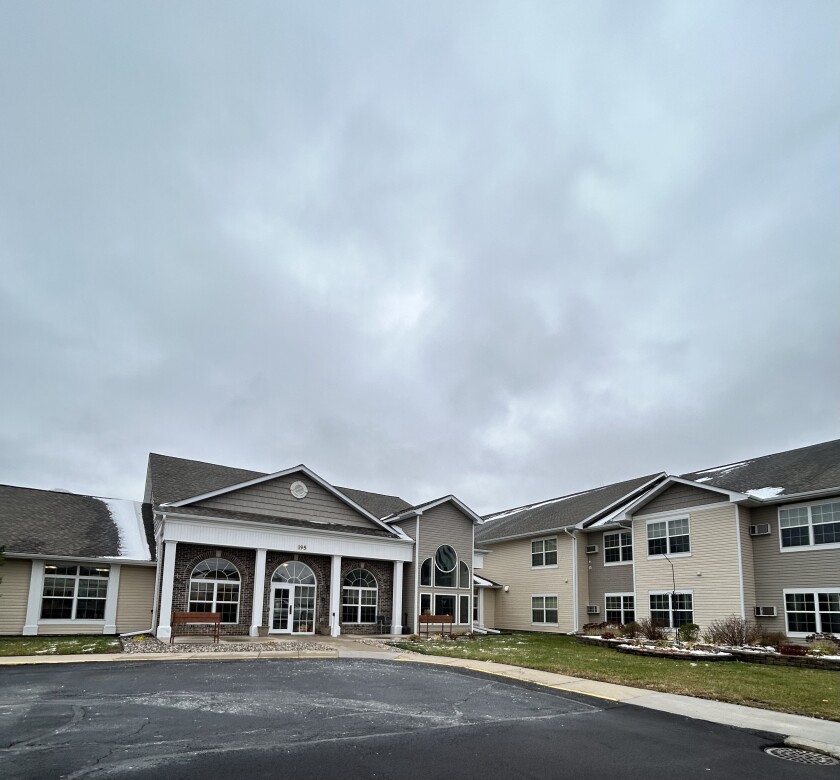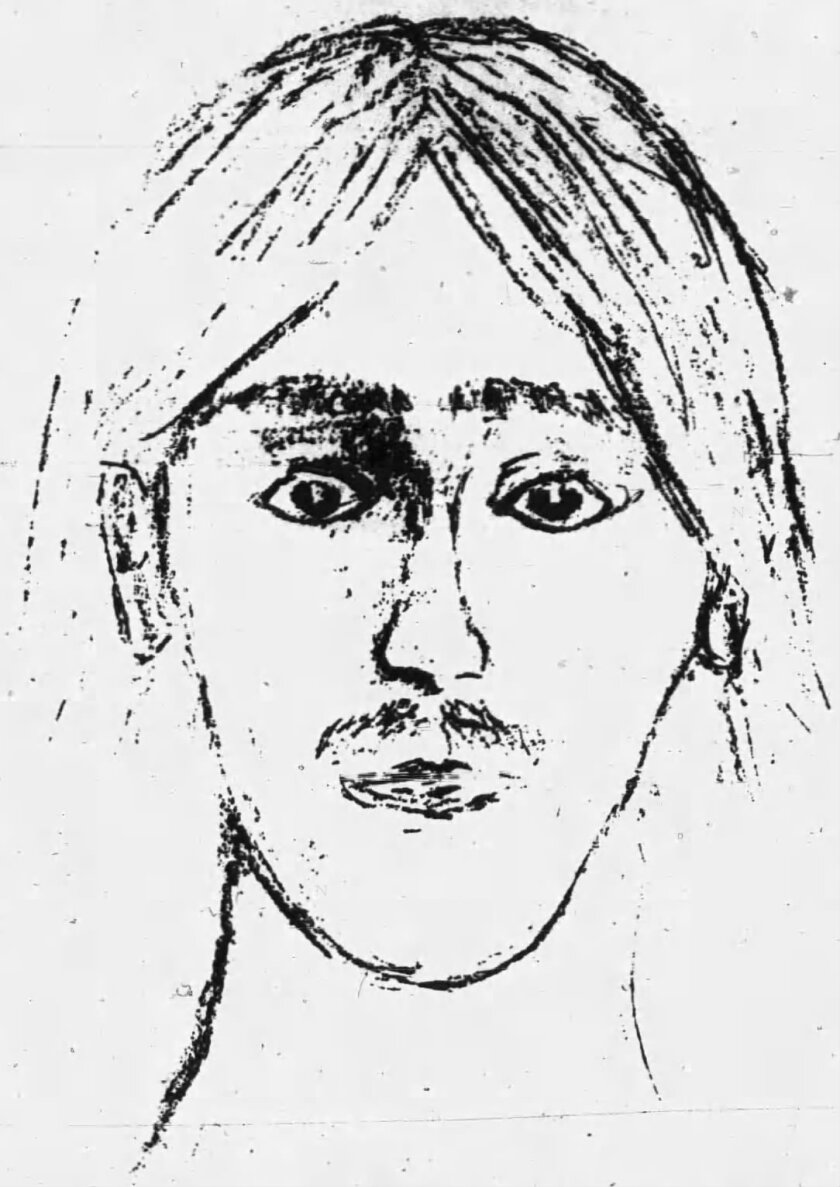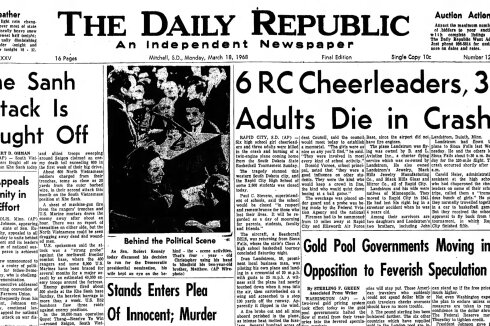DUNN COUNTY, Wis. — For decades, Jon K. Miller hid in plain sight.
The confessed killer of 25-year-old Mary Schlais, who was found dead with 15 stab wounds in a Wisconsin snowbank in 1974, has spent decades living among residents of southeastern Minnesota.
ADVERTISEMENT
On Nov. 7, eight months after moving from Austin, Minnesota, to an assisted living facility in nearby Owatonna, Dunn County investigators obtained a search warrant and knocked on his door. When presented with DNA evidence linking him to Schlais’ crime scene, Miller confessed.
The news sent shock waves through the community — and surprised local law enforcement and facility employees, who never saw any red flags from the quiet 84-year-old.

"We were very surprised," Steele County Sheriff Loni Thiele told Forum News Service, adding that he and fellow law enforcement officers had no previous contact with Miller.
Miller’s confession culminated an investigation led by the Dunn County Sheriff’s Office, in partnership with the genetic genealogy program at New Jersey’s Ramapo College. A stocking cap left on the scene provided investigators with the DNA of the suspected killer — and extensive genetic genealogy efforts traced them to Miller, who confirmed it was his.
Miller’s arrest adds a previously unknown name to the list of potential suspects in the country’s cold cases, particularly those in the two known states where he’s lived since Schlais’ death: Minnesota and Louisiana.
His confession also cements his DNA entry into the nationwide database used by law enforcement agencies, known as the Combined DNA Index System.
Miller’s DNA did not exist in CODIS prior to his arrest. Instead, the team at Ramapo College utilized forensic genealogy to match the hair sample with the suspect’s distant relatives. That path took investigators to the doorsteps of a number of the suspect’s relatives. Ultimately, it led them to Miller.
ADVERTISEMENT
For investigators with cold case victims’ DNA on file — in Minnesota, Louisiana and beyond — a new potential suspect has entered the national database, meaning investigators can specifically ask for a victim’s DNA to be tested against Miller’s.
Tracking Miller’s history
Miller lived at Twin Towers Apartment buildings, just one block away from the Austin Police Department, for at least 16 years, according to multiple background checks conducted by Forum News Service.

For the most part, Miller flew under the radar. A background check conducted by Forum News Service revealed one offense: a 1994 conviction for driving under the influence of alcohol.
Austin Police Chief David McKichan told Forum News Service a search for Miller’s name in their system, which dates back to 2014, retrieved just one entry. It related to a call placed by the Dunn County Sheriff’s Office in November when they were attempting to track him down.
Newspaper archives from the 1960s indicate he was allegedly involved in at least three burglaries: two in Austin and one in Texas.
A gap in his criminal record in the 1970s through 1980s illustrates the possibility that he had straightened his life out.
Except, he hadn’t.
ADVERTISEMENT
Schlais’ murder occurred in 1974, in the midst of the seemingly quiet party of his life. Miller had been married for roughly one year to his second wife when he picked up Schlais while she was hitchhiking in the Twin Cities area.
Schlais was on her way to an art show in Chicago. Miller told investigators he offered her a ride and stabbed her when she fought his sexual advances. After that, he found a remote area of Wisconsin, where he threw her body. He fled immediately after a witness saw him from a distance.
Six months later, Miller’s second wife gave birth to their child. By 1977, the couple was divorced. Miller has at least one other confirmed child, born in 1965.
Miller popped up on the radar again in 1988. A traffic citation printed in the Austin Daily Herald states a home address in Mandeville, Louisiana. Two background checks indicate he held a Mandeville address for a portion of the 1990s before returning to Mower County.
What was he capable of?
The manner in which Schlais was killed reveals what Miller was capable of in the winter of 1974.
In the wake of Schlais’ murder, investigators warned area women of a dangerous man with the proven capability of committing heinous murder.

Schlais was stabbed more than 15 times. When investigators arrived at the scene, they discovered the wounds encompassed her back, neck and stomach.
ADVERTISEMENT
Cuts on her hand showed she tried to get away. Her bruised face proved she had been beaten.
“It was a brutal attack,” then-Dunn County Sheriff Daryl Spagnoletti said in a 1974 Leader-Telegram interview. “It appears she put up a big fight before being killed.”

An eyewitness observed a man — now known to be Miller — throwing Schlais’ body into a ditch of a dead-end road in rural Dunn County. He attempted to cover her body with snow before he fled the scene.
And it happened in broad daylight, at roughly 1:30 p.m. on Feb. 15, 1974.
Schlais’ lifeless body was thrown in the ditch roughly 90 miles from her Minneapolis apartment, where she was last seen.
While the Dunn County Sheriff’s Office has been the lead investigative agency on the case, Schlais was a Minneapolis resident, and she was last seen alive within the city’s limits.
That’s significant for law enforcement in the Twin Cities and metro areas.
ADVERTISEMENT
For investigators who are grappling with unsolved cold cases, there’s now a new potential suspect: a man who drove a gold-colored Chevy Vega, who picked up — and killed — at least one female hitchhiker in 1974.
Part 2 of this series will examine the cold cases that occurred in and around the time of Schlais’ death.









